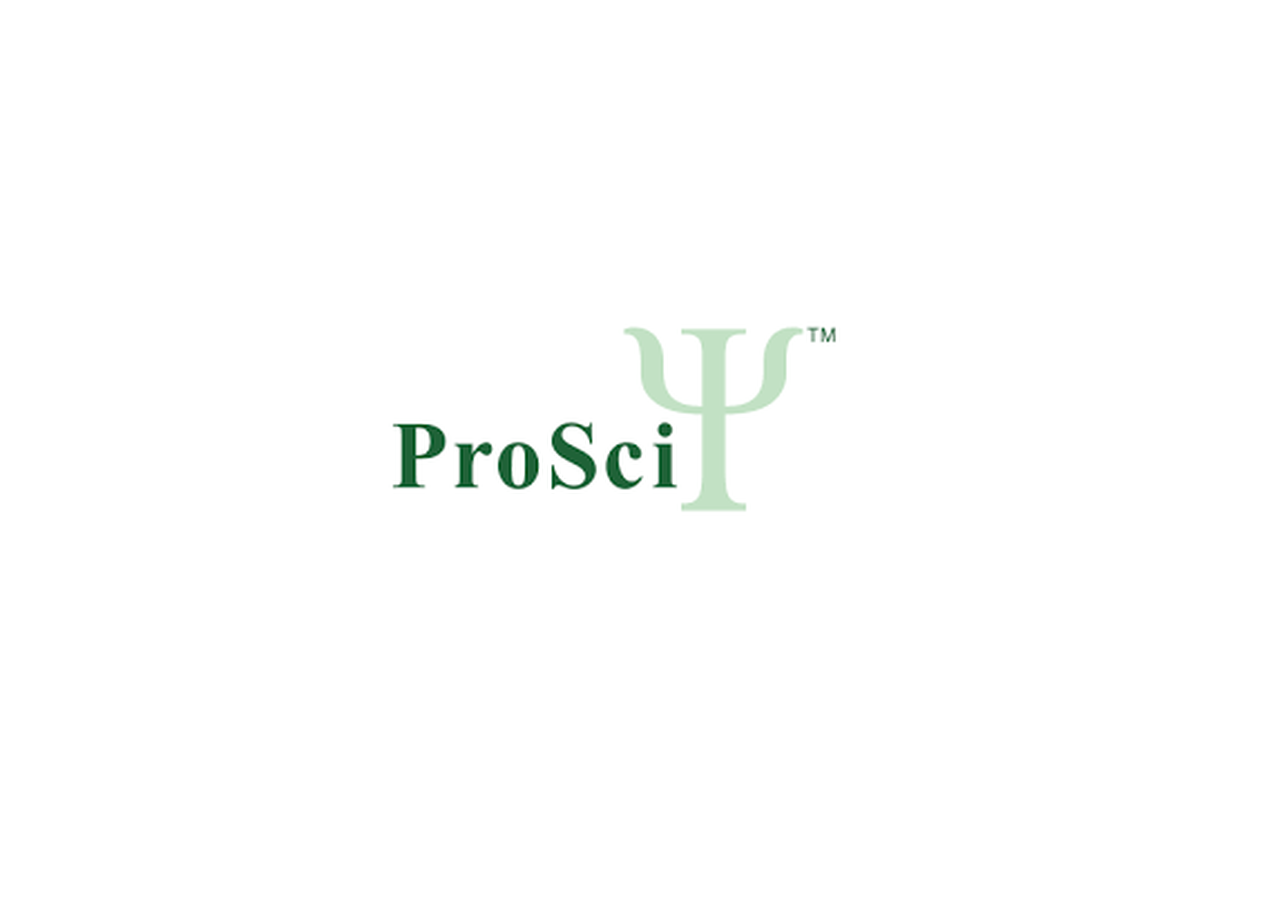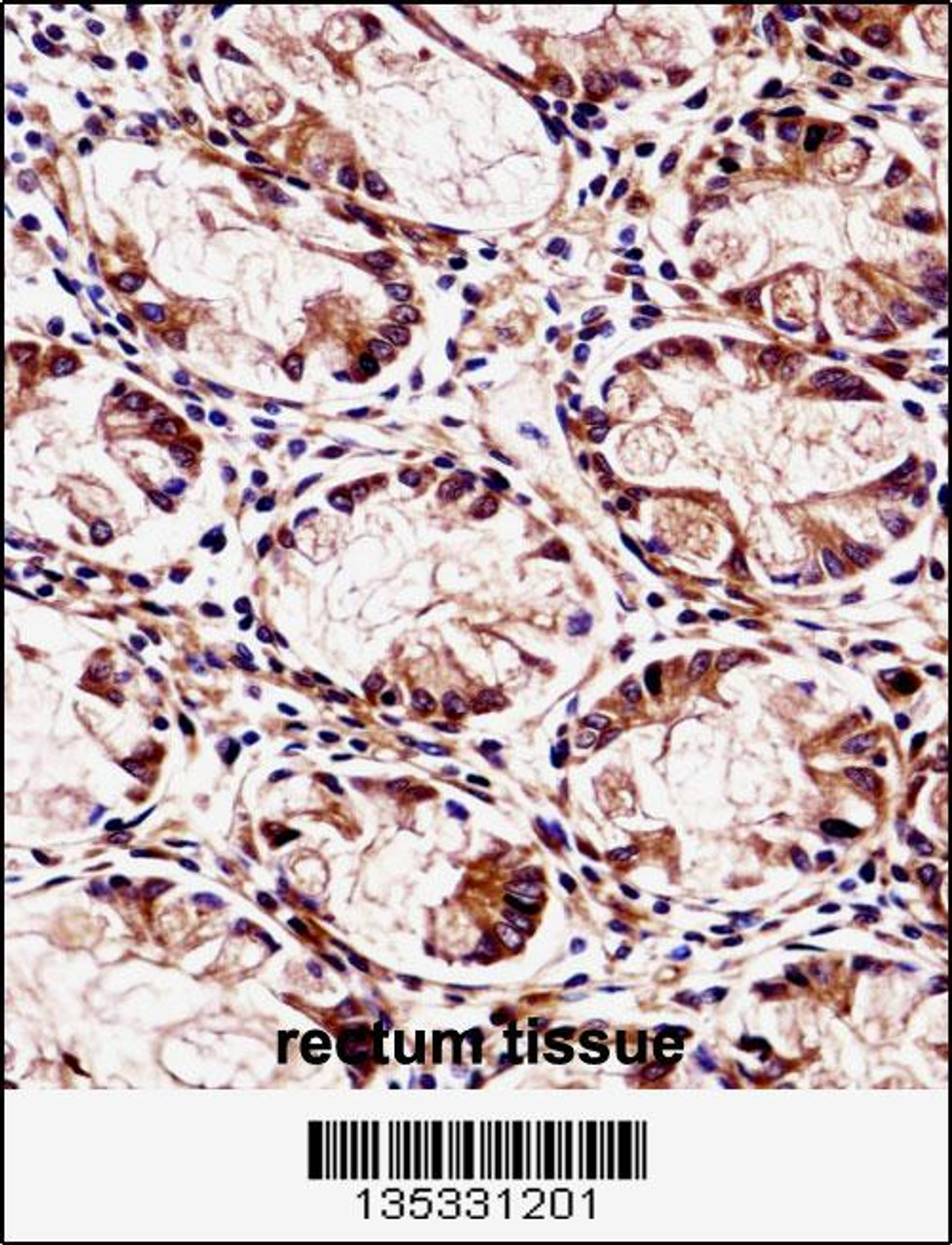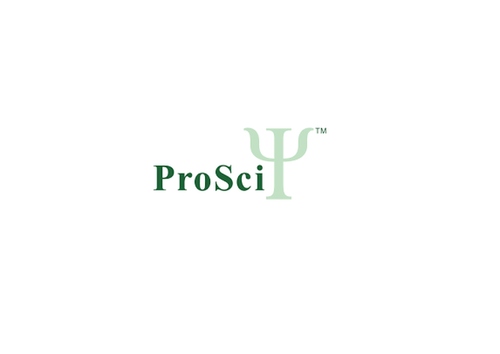Product Description
FXYD5 Antibody | 58-089 | ProSci
Host: Rabbit
Reactivity: Human
Homology: N/A
Immunogen: This FXYD5 antibody is generated from rabbits immunized with a KLH conjugated synthetic peptide between 71-100 amino acids from the Central region of human FXYD5.
Research Area: Signal Transduction
Tested Application: WB, IHC-P
Application: For WB starting dilution is: 1:1000
For IHC-P starting dilution is: 1:10~50
Specificiy: N/A
Positive Control 1: N/A
Positive Control 2: N/A
Positive Control 3: N/A
Positive Control 4: N/A
Positive Control 5: N/A
Positive Control 6: N/A
Molecular Weight: 19 kDa
Validation: N/A
Isoform: N/A
Purification: This antibody is purified through a protein A column, followed by peptide affinity purification.
Clonality: Polyclonal
Clone: N/A
Isotype: Rabbit Ig
Conjugate: Unconjugated
Physical State: Liquid
Buffer: Supplied in PBS with 0.09% (W/V) sodium azide.
Concentration: batch dependent
Storage Condition: Store at 4˚C for three months and -20˚C, stable for up to one year. As with all antibodies care should be taken to avoid repeated freeze thaw cycles. Antibodies should not be exposed to prolonged high temperatures.
Alternate Name: FXYD domain-containing ion transport regulator 5, Dysadherin, FXYD5, DYSAD, IWU1
User Note: Optimal dilutions for each application to be determined by the researcher.
BACKGROUND: This gene encodes a member of a family of small membrane proteins that share a 35-amino acid signature sequence domain, beginning with the sequence PFXYD and containing 7 invariant and 6 highly conserved amino acids. The approved human gene nomenclature for the family is FXYD-domain containing ion transport regulator. Mouse FXYD5 has been termed RIC (Related to Ion Channel) . FXYD2, also known as the gamma subunit of the Na, K-ATPase, regulates the properties of that enzyme. FXYD1 (phospholemman) , FXYD2 (gamma) , FXYD3 (MAT-8) , FXYD4 (CHIF) , and FXYD5 (RIC) have been shown to induce channel activity in experimental expression systems. Transmembrane topology has been established for two family members (FXYD1 and FXYD2) , with the N-terminus extracellular and the C-terminus on the cytoplasmic side of the membrane. This gene product, FXYD5, is a glycoprotein that functions in the up-regulation of chemokine production, and it is involved in the reduction of cell adhesion via its ability to down-regulate E-cadherin. It also promotes metastasis, and has been linked to a variety of cancers. Alternative splicing results in multiple transcript variants. [RefSeq curation by Kathleen J. Sweadner, Ph.D., sweadner@helix.mgh.harvard.edu.].
 Euro
Euro
 USD
USD
 British Pound
British Pound
 NULL
NULL












